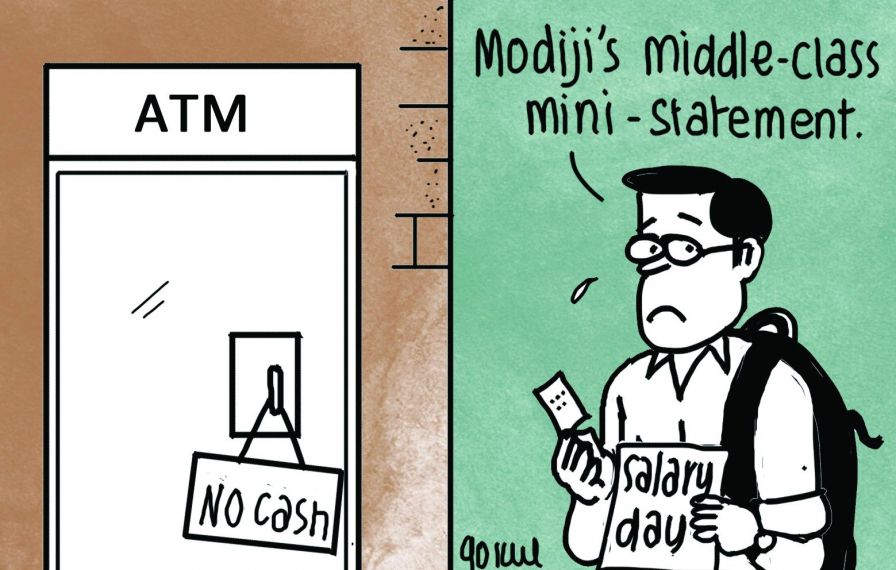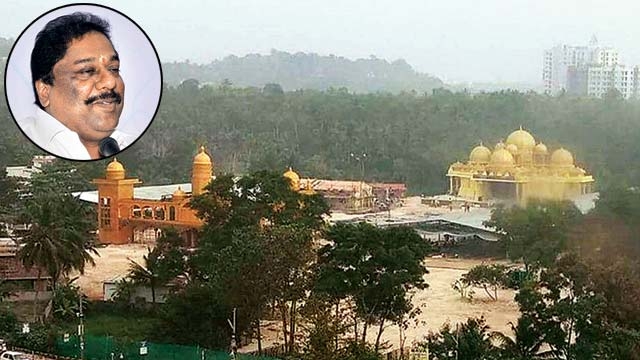prasad1
Active member
A week ago, I decided not to spend money in the wake of demonetisation. Some of my Modi bhakt friends suggested I spend money to keep the economy going. Heeding their advice, I got my weekly rations last week. Not foodgrains, silly, but cash. Rs 24,000, the government dictated weekly cash quota for all Indians.
I felt great when the bank teller handed me 11 notes of Rs 2,000 and another 20 notes of Rs 100. Before I could tell him I needed change he had summoned the next person in the queue. Armed with the Rs 2,000 notes, I stumbled on the dawn of Digital India.
With a Rs 2,000 note in hand, I sought to buy three tickets for the Alia Bhatt-Shah Rukh Khan starrer Dear Zindagi at Paradise, the single screen theatre near my home.
The man at the ticket counter told me firmly that he would not accept the Rs 2,000 note and if I wanted my family to watch Dear Zindagi I would have to bring change. Unfazed, I smiled and showed him my credit card, saying, "Now please accept this. India is going digital. Don't you know that?" The ticket seller laughed and said, "Are you serious? Who is going digital? Which India are you talking about?"
"Modiji's India," I replied.
"We don't accept credit or debit cards," he told me sternly, "If you want to watch the film, bring Rs 480 in change for three tickets. Or go to bookmyshow and book the tickets." 'Eureka!' I thought almost with Archimedean fervour, 'Modiji's Digital India works!'
I logged onto bookmyshow and tried to book three tickets using my credit card. I was startled to discover that the site would bill me Rs 58.20 extra as Internet charges for the three tickets. The extra charge, I guess, is the price one needs to pay for life in Modiji's Digital India, but I was unwilling to do so.
"You are a fool," a bhakt friend told me. "Download the Paytm app and then buy the movie tickets. They have many discounts."
'Eureka!' I thought again. 'Problem solved.' I tried to download the app on my phone and felt I was entering the Alibaba's cave of digital riches which Modiji talks about all the time.
In two minutes that illusion too was shattered.
My outdated smartphone responded, saying I didn't have enough space to download the app. "Ouch! Now what to do?" I asked my all-knowing bhakt friend.
There is a way out, he said, asking me to move my phone's memory data to an external memory card, and then install the app.
I would have to buy a 16 GB external memory card for Rs 528 to do that, he added. "No way am I going to pay Rs 528 extra for a memory card just to watch Dear Zindagi," I said.
The bhakt was determined that I jump onto the digital bandwagon. "If you don't change," he asked, "how will the rest of India change?"
He helpfully offered to book the movie tickets from his Paytm account. His fingers moved like the bullet train which Modiji wants us so badly to have on his phone's display and within seconds he was on Paytm to book my tickets.
Alas!
The Paradise theatre was not listed on Paytm and my friend finally gave up. There were only two options to watch Dear Zindagi.
Pay Rs 58.20 extra on bookmy show or fork up the exact change, which I didn't have. I opted for the time tested Indian solution, jugaad.
I asked my friend to loan me Rs 480.
And thus ended, for now at least, my 'Digital India' dream.
http://www.rediff.com/news/column/my-sobering-encounters-with-modis-digital-india/20161129.htm
I felt great when the bank teller handed me 11 notes of Rs 2,000 and another 20 notes of Rs 100. Before I could tell him I needed change he had summoned the next person in the queue. Armed with the Rs 2,000 notes, I stumbled on the dawn of Digital India.
With a Rs 2,000 note in hand, I sought to buy three tickets for the Alia Bhatt-Shah Rukh Khan starrer Dear Zindagi at Paradise, the single screen theatre near my home.
The man at the ticket counter told me firmly that he would not accept the Rs 2,000 note and if I wanted my family to watch Dear Zindagi I would have to bring change. Unfazed, I smiled and showed him my credit card, saying, "Now please accept this. India is going digital. Don't you know that?" The ticket seller laughed and said, "Are you serious? Who is going digital? Which India are you talking about?"
"Modiji's India," I replied.
"We don't accept credit or debit cards," he told me sternly, "If you want to watch the film, bring Rs 480 in change for three tickets. Or go to bookmyshow and book the tickets." 'Eureka!' I thought almost with Archimedean fervour, 'Modiji's Digital India works!'
I logged onto bookmyshow and tried to book three tickets using my credit card. I was startled to discover that the site would bill me Rs 58.20 extra as Internet charges for the three tickets. The extra charge, I guess, is the price one needs to pay for life in Modiji's Digital India, but I was unwilling to do so.
"You are a fool," a bhakt friend told me. "Download the Paytm app and then buy the movie tickets. They have many discounts."
'Eureka!' I thought again. 'Problem solved.' I tried to download the app on my phone and felt I was entering the Alibaba's cave of digital riches which Modiji talks about all the time.
In two minutes that illusion too was shattered.
My outdated smartphone responded, saying I didn't have enough space to download the app. "Ouch! Now what to do?" I asked my all-knowing bhakt friend.
There is a way out, he said, asking me to move my phone's memory data to an external memory card, and then install the app.
I would have to buy a 16 GB external memory card for Rs 528 to do that, he added. "No way am I going to pay Rs 528 extra for a memory card just to watch Dear Zindagi," I said.
The bhakt was determined that I jump onto the digital bandwagon. "If you don't change," he asked, "how will the rest of India change?"
He helpfully offered to book the movie tickets from his Paytm account. His fingers moved like the bullet train which Modiji wants us so badly to have on his phone's display and within seconds he was on Paytm to book my tickets.
Alas!
The Paradise theatre was not listed on Paytm and my friend finally gave up. There were only two options to watch Dear Zindagi.
Pay Rs 58.20 extra on bookmy show or fork up the exact change, which I didn't have. I opted for the time tested Indian solution, jugaad.
I asked my friend to loan me Rs 480.
And thus ended, for now at least, my 'Digital India' dream.
http://www.rediff.com/news/column/my-sobering-encounters-with-modis-digital-india/20161129.htm
Last edited:





